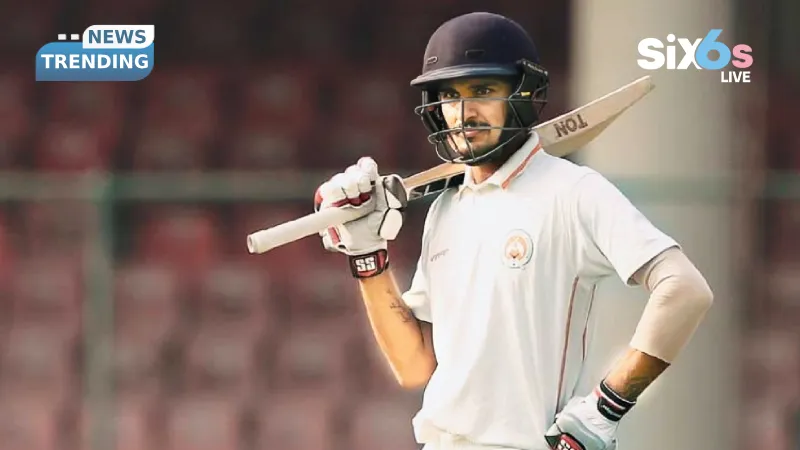On occasion, Indian domestic cricket will highlight a reminder to us all that not all great innings occur under the bright lights of television or with the eyes of the media on the player. Deepak Hooda’s massive 248 for Rajasthan against Mumbai was more than a high-water mark of his professional career; it was a message from a forgotten area of the cricket world. With strike-rates from Twenty20 cricket dominating the conversation of late, here was a man grinding down Mumbai, the greatest domestic team in India, with boundaries hit at a consistent rate.
Batting Like It’s 2003 Again
A certain timelessness to Deepak Hooda’s double hundred. There were no hard-hitting ramps. No well-planned reverse sweeps. Pure, classic accumulation with a mix of timing, patience, and position play, as if he had read Dravid’s gospel and applied it to cricket in this smartphone era.
Hooda’s innings against the best and most accomplished Ranji team of all time in Mumbai carried additional weight with their bowling that usually takes ambitious stroke players to the grave, looking feeble today. Hooda’s wagon wheel demonstrated a geometric lesson in his ability to be restrained; he played drives down the ground, he played flicks off the hips, and he only cut when invited to do so. It was not about being aggressive; it was about having control.
When Partnerships Become Psychological Warfare
Kartik Sharma’s 139 was the right companion to Hooda’s dominance as he put together a 300-plus partnership that did nothing but drain the energy from the bowlers of Mumbai – it also drained them of their rhythm. When a team like Mumbai loses its sense of discipline, it is usually only a matter of time before the game unravels for that side.
Hooda’s domination made the fieldsmen defensive in mind, in body language, and ultimately, in terms of how much pressure they felt to take wickets, while by the time Rajasthan decided to declare, it wasn’t just that they had taken the upper hand about the scoreboard – they had gained an upper hand mentally over Mumbai.
The Broader Trend: Domestic Titans Re-Emerging
Hooda’s batting could be symbolic of a greater thing – A slow rise of the importance of test cricket back into domestic cricket. On the many cricket fields across India, other players such as Hanuma Vihari (Tripura – 121) and Akash Vasisht (Himachal – century) have demonstrated to all of us that Indian cricket has a lot of talent, and this talent does not disappear; it simply waits to be given an opportunity.
In the midst of T-20 excitement, these performances also tell us that even in today’s fast-paced world of cricket, there is still value in being able to play a long period of time at the crease. And regardless of whether or not selectors will admit it, when a player can score 100 and follow that up with another 100, he will always be on their radar.
Mumbai’s Modern Malaise
At one point in history, chasing large margins (over 300) was an all-too-common pastime for Mumbai. Whether it was during the heyday of Wasim Jaffer and Amol Muzumdar or when Prithvi Shaw scored his triple century, this team would have had you believe they were experts at putting together comeback stories. More recently, however, Mumbai’s batting has exhibited a concerning trend of moments of sheer brilliance, followed by collapse due to a complete lack of cohesion with the top-order batsmen.
Yashasvi Jaiswal’s quick fifty showed some spark, but if he cannot be supported by a strong batting line-up behind him, then this could potentially turn into a very rare result in Ranji cricket that sees Mumbai, the power house team, being out-classed by the opposition.
Stay updated on the latest cricket news and exciting updates at Six6slive. Dive into our in-depth articles and analyses to connect with the action today!
